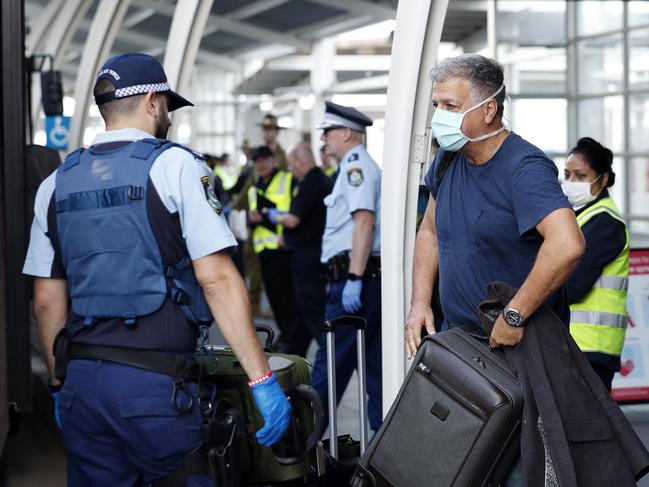Coronavirus: How Queensland compares
One week ago the states and territories started implementing their own measures to stop the spread of coronavirus. Seven days on, find out what measures appear to be working.
Health
Don't miss out on the headlines from Health. Followed categories will be added to My News.
ONE week after Australian states and territories started implementing their own individual control measures to stop the spread of coronavirus, Queensland has emerged as the comparative success story, with the slowest rate of increase of any mainland state or territory.
Cases of new infections in the Sunshine State rose from 397 on March 24 to 743 yesterday – an increase of 87.1 per cent.
The state’s share of the national caseload in the past week decreased slightly – from 19 to 17.8 per cent.
Queensland and South Australia were the only two mainland states where the number of cases did not double in the past week.
March 24 marked a pivotal moment in the Australian response to the crisis, with different states announcing or enacting different measures to control the virus. Victoria shut schools, while Queensland, South Australia, Western Australia and the Northern Territory all closed their borders and forced arrivals into quarantine. Tasmania had shut its borders on March 18.
On March 24, Victoria had just 14 more coronavirus cases than Queensland, but yesterday the Garden State had 174 more cases.
Queensland has also carried out a slightly higher number of tests for the virus: 47,025 compared 45,000 in Victoria.
Dr Peter Collignon from Australian National University said the encouraging trend in Australia’s overall rate of infection was mainly owing to national measures rather than the state-specific restrictions which started a week ago.
“The drop in the curve that we’re seeing now is not what we did on Sunday, it’s what we did 10 days ago, which was closing our borders, putting all travellers in quarantine, making sure all patients were kept isolated, and people socially distancing,” Prof Collignon said.
“With these curves, what you do takes five to 10 days to see an effect, because the average incubation effect is five days. So even if I lock up everyone today, we’re still going to see more cases.”

Dr Joel Miller from La Trobe University said it was too early to evaluate the efficacy of different states’ policies, but he anticipated that the “more aggressive policies will be more effective”.
“But that needs to be tempered … the social costs of these policies may lead to fatigue and people failing to follow the policies in three or four or eight weeks time when there may be greater danger,” he said.
Dr Miller said the impact of mandatory school closures – an issue that was hotly debated in each state and territory, but which only Victoria enacted a week ago – was as yet unclear.
“There is not much data suggesting children play a significant role in transmission, and the large single-events that trigger outbreaks have all been from groups of adults (weddings, etc),” he said.
Prof Collignon said he was “loath to close schools” as children “seemed to have a limited role in infections” to date.
“A number of students have got this, but there have been no outbreaks in schools, as far as I am aware, anywhere in Australia yet.”
Prof McLaws said the comparatively small numbers of infections within each state meant “it’s very difficult to see an improvement at this stage from things like shutting schools in Victoria versus not shutting them in New South Wales”.
“But there’s been a slowdown of the doubling [of the national rate of infection]. Instead of every three days, it’s slowing down to five days or more, and that's a very good sign,” she said.

Prof Collignon warned that the crisis “was not going to be over in a few weeks’ time”.
“This is at least six months and it may go on for two years. The earliest we will have a vaccine is 18 months, and it’s not a given that we’re going to get a vaccine,” he said.
The slowing rate of increase in new infections was “reason for optimism,” Prof Collignon said, but he warned there would be no room for complacency for the next two years.
“Basic things we are doing like social distancing, etc, we are going to have to keep that up,” he said.
“We can’t all be hermits for two years so we’re going to have to work out how to do that without becoming hermits. We can’t have zero risk but how do we make it minimal risk?
“But the minimal risk will be different in different seasons,” he said.


